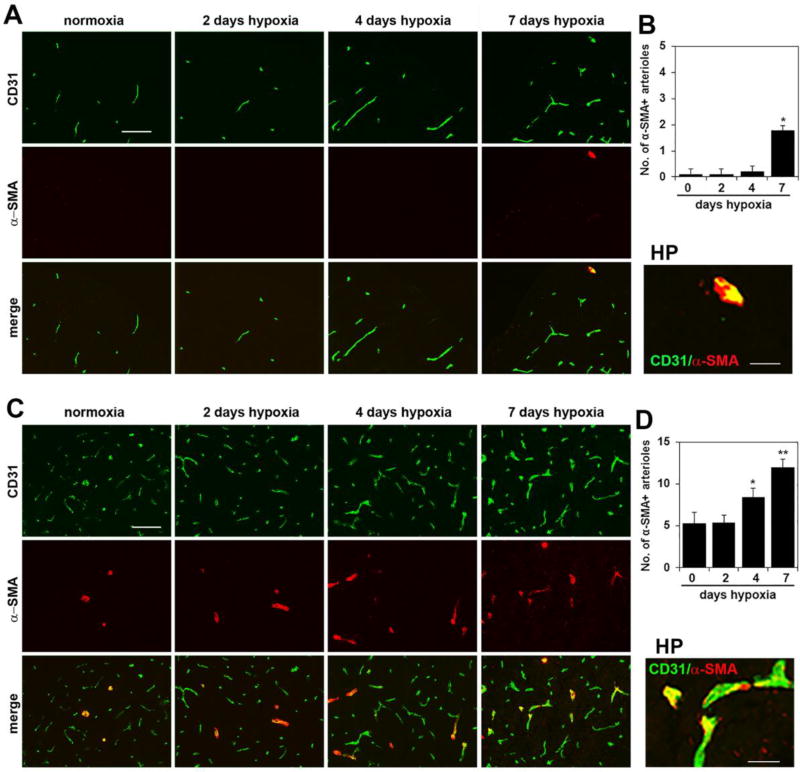Figure 2.
Chronic mild hypoxia (CMH) stimulates arteriogenic remodeling in spinal cord blood vessels. Dual-IF was performed on frozen sections of spinal cord white matter (A) or gray matter (C) taken from mice exposed to normoxia or 2, 4 or 7 days hypoxia using antibodies specific for CD31 (AlexaFluor-488) and alpha-smooth muscle actin (α-SMA, Cy-3). Scale bar = 100 µm. High power (HP) images, scale bar = 25 µm. B and D. Quantification of the number of arterial vessels at different time-points of CMH in white matter (B) and gray matter (D). Results are expressed as the mean ± SEM (n = 3 mice/group). Note that under normoxic conditions, most of the α-SMA-positive vessels were located in spinal cord gray matter, with barely any observed in white matter, but 7 days CMH significantly increased the density of α-SMA-positive vessels both in white and gray matter. * p < 0.05, ** p < 0.01 vs. normoxia (0 days hypoxia).

